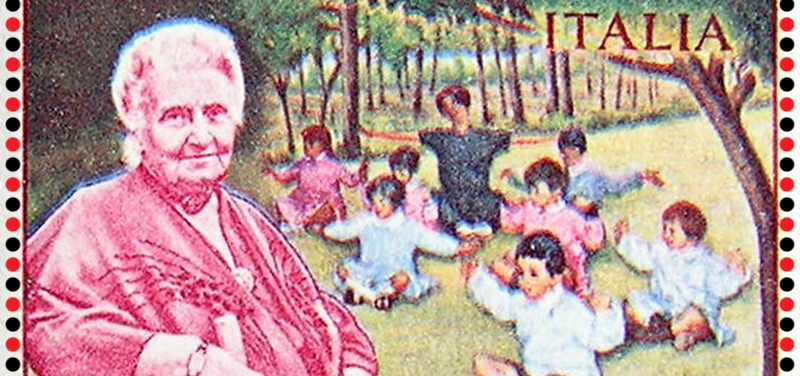
My name is Emmy. I became a Montessori Guide in 2012, receiving my AMS certification in 2013. After running my own classrooms, I now substitute at my local charter Montessori school. I also teach skiing to children at Breckenridge Ski Resort. As such, I have developed relationships with many children, and I would like to extend my availability for general childcare. A sense of order is imperative for a happy child and parent, and I would enjoy helping the disheveled get organized.
I can give lessons! I am a musician and have taught piano, voice, and ukulele lessons. I was a national level tennis player in the USTA and travelled the world for competition, and am willing to teach private, groups, or simply be a hitting partner, whether it is tennis or pickleball! I also have 200 RYT and have taught Yoga in gyms, country clubs, and classrooms. I speak German and Japanese, but that’s a very niche interest, but in case anybody needs conversational assistance, I’m there to help. If you have elderly family members that would benefit from general conversation or company, I’m happy to stop by and be present with them!
My philosophy around economic resources these days is that payment is always on a sliding scale, as the economic disparity in the world makes it impossible to fix rates in a fair manner. I aim to make $20-60 per hour, but am grateful simply to have my health and happiness!
Emmy’s Qualifications
– College of William and Mary B.A/B.S in 2009 with an interest in Positive Psychology and child development.
-Parenting since 2010
-Montessori certification (AMS) in 2015. Taught multi-age classrooms for ages 3-6, and a pandemic-time homeschool co-op for ages 3-10. Became substitute teacher at Jefferson County Montessori charter schools in 2021.
-200 hour Yoga teacher training in 2013, after becoming a practicing Yogi since 2001, at the Junior Tennis Champions Center in College Park.
-Ski instructor at Breckenridge since 2017, teaching family privates and group lessons to children age 3-14.
-Musician using piano, voice, and ukulele. Experience with classical since 1993, learning to jam since 2006, teaching children since 2019.
-National/Internationally ranked tennis player until 2007, and youth and adult tennis/pickleball coach. (formerly PTA-certified.)
Montessori
Non-Violent Communication
Organizational Assistance
Love and Logic
Authentic Relating
Music
Math & Language

Music
I grew up learning to read and play classical music. I quit classical lessons at 13, but kept playing. In college I joined jam sessions, and as an adult I went to open mic nights and learned to play with others. I have taught piano and voice, and love to teach children how to play the songs they love.
I am capable of teaching them to read, using workbooks that already exist, but my favorite way to teach is to create a band and explore our favorite songs. We find the chords and lyrics, learn about the song structure, chord arrangements, and rehearse until we can explore how to noodle around to express yourself. Due to the power of the creative word, I like to re-write the words in pop/rock/country songs, away from toxic mindsets and values to something more agreeable!

Yoga
Introducing children to yoga offers a beautiful way to cultivate physical well-being, character development and self awareness. Asana’s provide a way to connect with our bodies, explore movement, and build strength and flexibility. Asana is often the first introduction to pranayama, breath control, emphasizing moving the body with the breath. We can become aware of how the breath can calm the mind and heart, as well as energize the body.
Through stories or lived experience, children can explore the sensations and learn to observe, free of squirming and judgment. For emotional regulation, meditation and contemplation is key. For character development, yoga includes a limb of yoga dedicated to personal observances and ethics. Being exposed to these values cultivates right thought, speech, and action, and pave the way to good merit and a life full of beautiful contributions. Through nature study and observing the interconnectedness of all the systems, we can foster a sense of unity. Thus, we can do our part in raising the compassionate, enlightened leaders of the future. I teach yoga to children and adults of all ages. Read more over at .shop/yoga

A Sense of Order
Organize and keep it tidy!
In the classroom, we teach children to complete their work by putting it away and everything has a place. This organization should be replicated at home.
Getting organized and staying tidy requires one big action, followed by consistent daily habits.
First, we tidy by category rather than by room, so your whole house becomes streamlined. The system developed by Mari Kondo follows this order, based on what is the easiest starting place: Clothing, books, papers, komono (little, miscellaneous items), and at the end, sentimental items. This prevents overwhelm and keeps the process systematic. After discarding and donating items that no longer spark joy or serve a purpose, we find a permanent home for every item!

Maria Montessori
Cultivating independence, coordination, concentration, and their natural sense of order.
Homage to Dr. Maria Montessori! She is the first female physician in Italy and a suffragette. She created and popularized child-sized furniture as well as the first playgrounds in the late 1800s. Consider putting “Life and Work” a place on your “To-Read” list.
Contrary to the idea that children are a blank slate, she observed that children go through “sensitive periods,” characterized by repetitive, obsessive concentration on certain things. Classrooms are bunched by children spanning 3 years because they share a common developmental stage. Each stage builds upon the previous one in a cohesive manner. She noticed that they develop their coordination, independence, concentration, and sense of order at a very early age by being exposed to certain materials during these sensitive periods. Developing corresponding classroom materials for each sensitive phase of their development, from “children’s House” (3-6 year olds), Early Elementary (6-9), Upper Elementary(9-12), and early and late adolescence. Montessori’s core principles, such as encouraging independence, self-directed learning, hands-on exploration, and catering to the child’s developmental needs and interests is applied to the adolescent years. Through Montessori’s principles, children are given opportunities to develop their concentration, order, and independence by providing them with the means and methods to take care of themselves, their environment, and others. Montessori’s vision of education for peace and social change involves equipping adolescents with the knowledge, skills, and values needed to become agents of positive transformation in society.

Love and Logic
Co-create boundaries and guidelines for living, along with natural or rational consequences in place ahead of time.
This helpful system of guidelines helps with classroom management and parenting and was developed by an experienced educator in Colorado, Jim Fay. As a parent and educator, we first model healthy behavior and talk of them in our life experiences. When children encounter obstacles and challenges, we can celebrate whatever choice they make as a priceless learning opportunity. In our interactions with dealing with the challenges, we use empathy as the starting point for co-creating solutions and/or reflecting on missteps.
Five points of Love and Logic are:
- Neutralize arguing by handing the problem over to the creator of the problem.
- Express empathy before delivering consequences
- Setting limits with enforceable statements
- sharing control through lots of small choices
- anticipating challenges and consequences.
For more information, visit LoveAndLogic.com

Non-Violent Communication
NVC scripts are designed to help people express their needs and feelings in a way that is respectful and compassionate.
This system for communication was developed by Marshall Rosenberg, an internationally acclaimed mediator. By identifying how our emotions point to met and unmet needs, we can boil down conflict resolution into a handy script.
“I noticed W. I feel X, because I need Y. Could we Z?”
Insert the variables! In the above example, W is a situation that arises, and X is an emotion (free from opinions/interpretation.) Y are universal human needs. Z is a starting point for brainstorming solutions for now and the future.
Vocabulary for various emotions and needs are worth studying!

Authentic Relating
No legacy is as rich as honesty.
~Shakespeare
We can use Authentic Relating games to practice positive communication styles and non-violent communication (NVC) scripts. These games are designed to help participants connect with each other on a deeper level, practice positive communication styles, and thus build stronger relationships.
Some examples of Authentic Relating games include:
– Mirroring: In this game, one person shares something about themselves, and the other person reflects back what they heard, without interpreting or adding their own thoughts or feelings.
-Ask-A-Friend: this 3 person activity requires one speaker and two active-listeners. The speaker will present their idea or conundrum to the group for about 3 minutes. Listener #1 will listen and mirror back what they heard and reflect on their tone and excitement/anxiety levels around certain topics. Listener #2 will listen/observe what they see in the speakers body language. Both listeners will refrain from advising, but just like with the ‘mirroring’ game.
-The Noticing game: Two people will sit across from each other and simply observe (and maybe wonder/ask with curiosity) about the other person. The second person will say “hearing ___, I feel ___,” allowing space between the observation and reaction to notice feelings. The observer could cascade observations for two minutes, and the observed could then spend an equal amount of time responding to all that was said.
– The Hot Seat: In this game, one person sits in the “hot seat” and answers questions from the other participants. The questions can be about anything, and the person in the hot seat is encouraged to answer honestly and authentically.
– Storytelling: In this game, each person shares a personal story, and the other participants listen attentively and ask questions to help the storyteller dive deeper into their experience.
Emmy’s Summer Camp Plan
 My summer camp is affordable and flexible. Parents have the option to camp alongside their children while maintaining the freedom to leave their kids with me to attend to their responsibilities.
My summer camp is affordable and flexible. Parents have the option to camp alongside their children while maintaining the freedom to leave their kids with me to attend to their responsibilities.
We balance work, play, and cultivate a commitment to sustainable living through learning to live slow and in tune with the nature within us and around us. We spend time in gardens, excursions to museums, wild parks, and cultivate a love for healthful living and kind and loving relationships.
Schedule
May 26, Summer Kick-Off! 1-4pm at Bergen Park, Evergreen CO: Adult and mature children’s Nerf battle.
June 3: On the Prairie in Strasburg, Colorado.
- Camp out in the plains under the stars
- Bring your bike to explore the property
- Outdoor games: soccer, frisbee, archery, Nerf dart battles
- Obstacle course for all skill levels and competitive between all ages
- Musical expression and storytelling
- Games
- Cooking and camp chores
June 10: Into the Woods near Conifer, Colorado
- Hiking and exploring the piney woods
- Rock climbing onsite
- Swimming in a quartz-lined pool
- Archery and golf
- board and card games
- Musical exploration and jam sessions
- Cooking and camping chores
Excursions
The Kenosha Pass Colorado Trail segment offers moderate elevation gain and well-maintained trails, scenic views, accessible trailhead, ample camping opportunities, various route options, and proximity to services in case supplies dwindle.
Denver:
Denver Museum of nature & science, children’s museum of denver, denver art museum, denver botanic gardens, denver zoo, denver museum of contemporary art, History Colorado Center, Clyfford still museum. Free nights at DMNS on 6/4, 6/19 will be packed. We will also visit Localhost E-sports Arena in Lakewood, Barr Lake State Park’s Archery Range, Bluff Lake Nature Center, Majestic View Nature Center. We will volunteer, cook and serve at Mutual Aid Monday at 3:30-7:30pm on Mondays at Civic Center Park.
Colorado Springs:
National Museum of World War II Aviation, the Pioneers Museum, Garden of the Gods, Manitou Springs Penny Arcade, Pikes Peak, Cheyenne Mountain Zoo, Colorado Springs Olympic & Paralympic Training Center to learn about the history of olympic and paralympics, and the ghost town museum.
Fort Collins:
Fort Collins Museum of Discovery (offering a blend of science, history, and culture), Cache La Poudre River and/or the Poudre River Trail, Archery Range at Horsetooth Reservoir, and if we go on a Wednesday or Friday, from 6-9:30pm there is casual and commander MTG nights at Gamers Haven.
Boulder:
Boulder Museum of Contemporary Art, Fiske Planetarium, Boulder History Museum, University of Colorado Museum of Natural History, Boulder reservoir (swimming, boating, fishing), Valmont Bike Park.